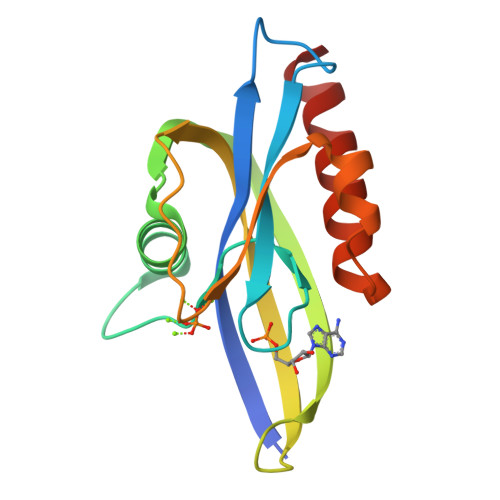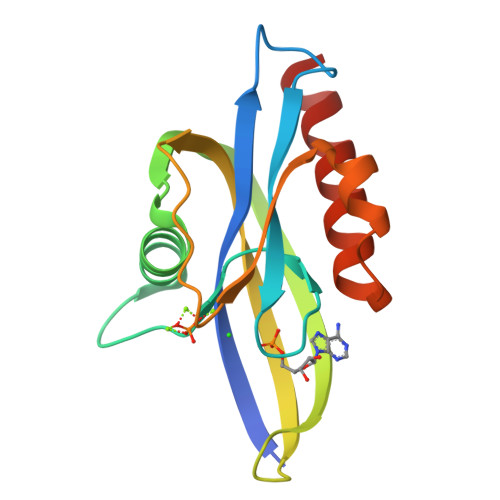Chlamydia trachomatis CT771 (nudH) Is an Asymmetric Ap4A Hydrolase.
Barta, M.L., Lovell, S., Sinclair, A.N., Battaile, K.P., Hefty, P.S.(2014) Biochemistry 53: 214-224
- PubMed: 24354275
- DOI: https://doi.org/10.1021/bi401473e
- Primary Citation of Related Structures:
4ILQ, 4MPO - PubMed Abstract:
Asymmetric diadenosine 5',5‴-P(1),P(4)-tetraphosphate (Ap4A) hydrolases are members of the Nudix superfamily that asymmetrically cleave the metabolite Ap4A into ATP and AMP while facilitating homeostasis. The obligate intracellular mammalian pathogen Chlamydia trachomatis possesses a single Nudix family protein, CT771. As pathogens that rely on a host for replication and dissemination typically have one or zero Nudix family proteins, this suggests that CT771 could be critical for chlamydial biology and pathogenesis. We identified orthologues to CT771 within environmental Chlamydiales that share active site residues suggesting a common function. Crystal structures of both apo- and ligand-bound CT771 were determined to 2.6 Å and 1.9 Å resolution, respectively. The structure of CT771 shows a αβα-sandwich motif with many conserved elements lining the putative Nudix active site. Numerous aspects of the ligand-bound CT771 structure mirror those observed in the ligand-bound structure of the Ap4A hydrolase from Caenorhabditis elegans. These structures represent only the second Ap4A hydrolase enzyme member determined from eubacteria and suggest that mammalian and bacterial Ap4A hydrolases might be more similar than previously thought. The aforementioned structural similarities, in tandem with molecular docking, guided the enzymatic characterization of CT771. Together, these studies provide the molecular details for substrate binding and specificity, supporting the analysis that CT771 is an Ap4A hydrolase (nudH).
Organizational Affiliation:
Department of Molecular Biosciences, University of Kansas , Lawrence, Kansas 66045, United States.



























